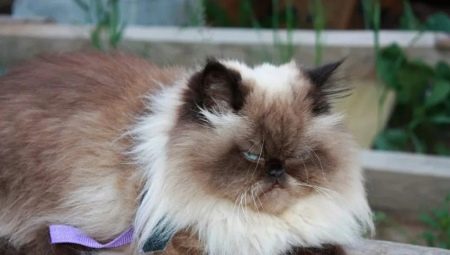Anyone who equally appreciates the charm of Persian cats and the splendor of Siamese will find a lot of pleasure if he becomes the owner of a Himalayan cat. This breed combines all the advantages of Siamese and Persians. In order for the pet's life to be long, and he himself pleased with his appearance and affectionate disposition, you need to take care of him correctly.
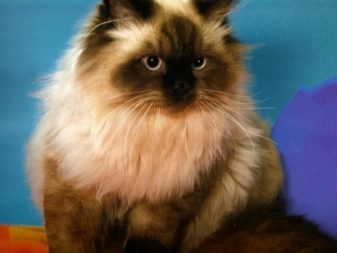

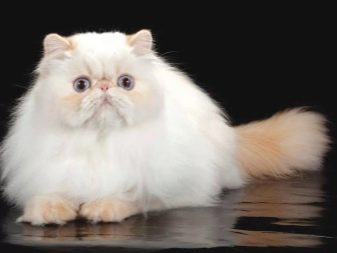

Description
The Himalayan cat, despite its "geographical" affiliation, is of American origin in name. It was in the United States in the middle of the last century that they were crossing Siamese cats and Persian cats. In the United States, the new breed was called Himalayan, and in the UK color point. Both one and the other name has a right to exist.
In the cross between Siam and Persian, the corresponding hereditary material was found, as in the Himalayan rabbit, which has light coat on the body with dark spots on the ears and limbs. At the same time, the name color point also implies such features of the cat's color.
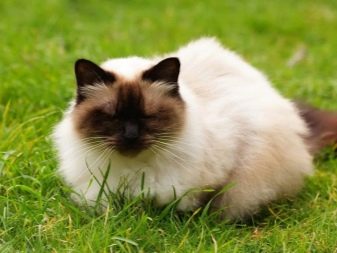
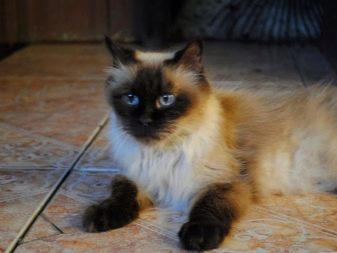
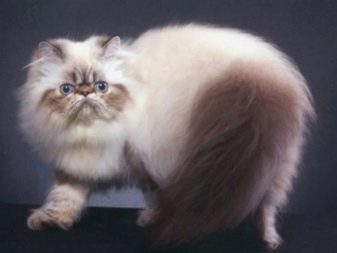
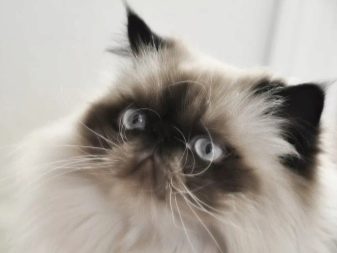
The Siamese-Persian mestizo harmoniously combines the features of one and the other breed. The features of both ancestors are clearly visible in the cross. From the Siamese Himalayan cat got bright blue eyes and characteristic color features, and from the Persian - a beautiful fluffy fur and an upturned nose. The weight of the representative of this amazing breed ranges, as a rule, within 4-6 kilograms, although some adults have a more significant mass. The breed standard assumes the following features:
- the shape of the head is round;
- noticeable cheeks;
- muzzle wide and flattened;
- ears are small, set wide apart;
- blue eyes;
- snub nose with open nostrils;
- strong physique and a pleasant, slightly prominent stomach;
- short paws;
- fur is long with thick undercoat;
- there is a beautiful “collar” on the neck;
- the tail is magnificent;
- on the muzzle is a dark “wool mask”.
The mixture of Siamese and Persian cats in appearance is very bizarre, all the more attractive for connoisseurs of the Himalayan cat breed. On average, their life expectancy is about 12 years. About as many owners will be able to enjoy the company of a furry friend.
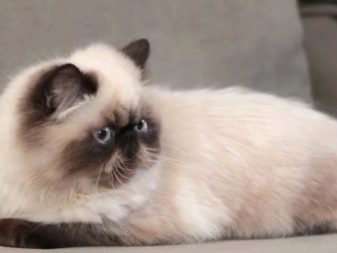
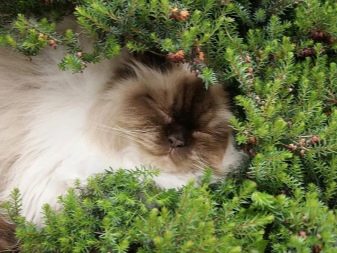
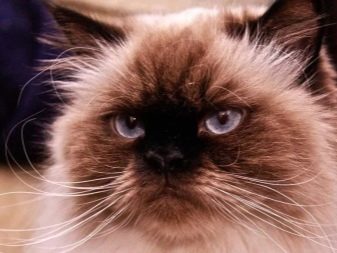
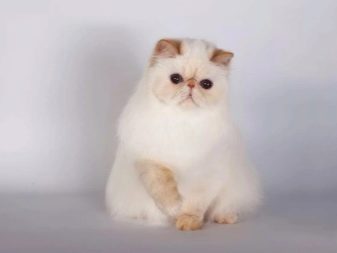
Character Features
The Himalayan cat is not a creature that will calmly endure the absence of human society. Unlike many of his brothers, this animal is strongly attached to the owners, as well as to the house in which it lives. From time to time, the pet will in every way attract attention to get the next batch of petting. He likes to sit on his hands, showing his friendly disposition. He really likes to be stroked. If you need to remind a person of your needs, the cat will not only look into his eyes and rub against his legs, but also meow quietly.
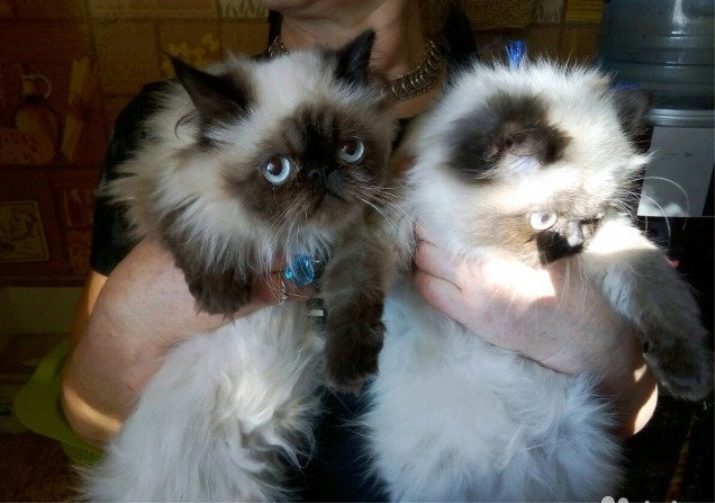
The Himalayan cat patiently endures the amusements of the children, without putting out its claws and not using its teeth. This happens if she is hurt. If a fluffy beauty doesn’t like something, she will not take revenge, like a Siamese one, but simply go to a secluded place where she will not be reached. In order not to feel lonely, the pet can walk “tail” after the owner from room to room. But at another time, laziness attacks him, he can lie for 20 hours on a sofa or windowsill, being immersed in a deep sleep. By such behavior the “Himalayan” strongly resembles his ancestor along the Persian line, although nevertheless the representative of the “new breed” is much more active.
A cat can play with a toy for a very long time, especially if its owner is nearby. At the same time, this animal will never be naughty, raiding curtains and wardrobes, as well as conquering other "peaks". Cats subtly feel the mood of the owners, listen with pleasure to what they are told. Sometimes it seems that animals really understand human speech.
However, they do not like a noisy society. They are in no hurry to enter a room where there are a lot of people. Camping is not for them. They are more comfortable in the house, among those whom they know well than in the open.
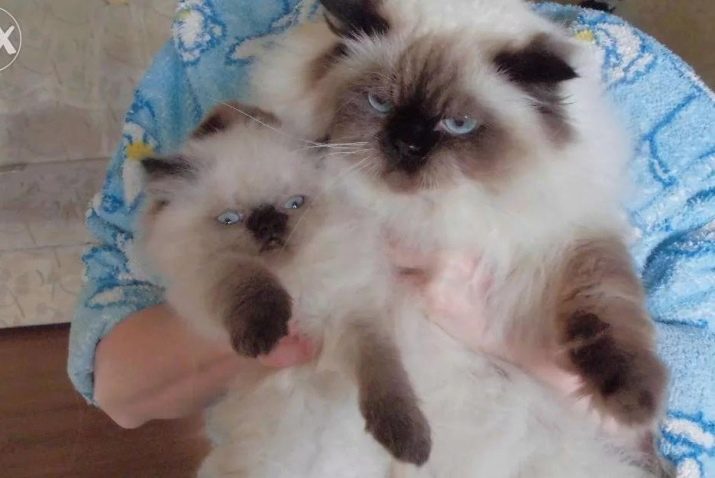
Types of colors
Kittens of the Himalayan breed do not have a pronounced color. Their “color” seems more uniform than that of adult cats. Finally, the coloring appears only in two or three years. The spots on the legs, tail and muzzle are of different shades. There are Himalayan cats of the following colors:
- with cream spots on the fur;
- with lilac;
- with redheads;
- chocolate color;
- gray;
- blue color.
The breed standards suggest the presence of a dark mask on a mostly light background that does not go beyond the "face". Sometimes the dark parts of the color are with stripes or spots of a different shade. The most valuable are chocolate and lilac colors on a light background - cream or white.
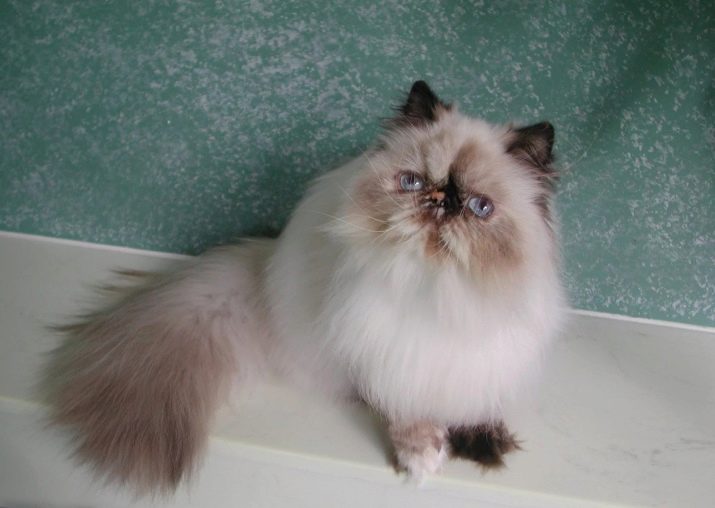
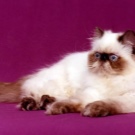


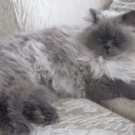
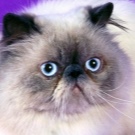
How to choose?
Considering that Himalayan cats are a relatively new breed, it will not be possible to find such interesting kittens by announcement. And even more so you will not meet this animal on the street. The price of a purebred kitten is at least 10 thousand rubles. So even if you come across a “fluffy specimen” with blue eyes and a thoroughbred mother, this does not mean that the characteristic features will be passed on to descendants. Outbred genes will still creep out.
A pure representative of the breed is located only in the nursery or at the breeders. In any case, the choice should be guided by the following criteria:
- kennel prestige (you can study online reviews);
- the type of animals talking about the conditions of detention (if they are full, well-fed and happy, everything is fine);
- the appearance of the kitten (how healthy it looks);
- passport and family tree;
- age of pussies.
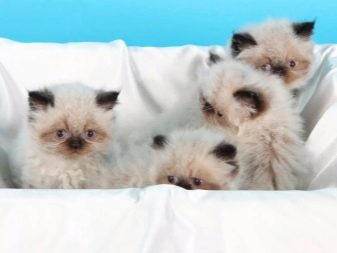
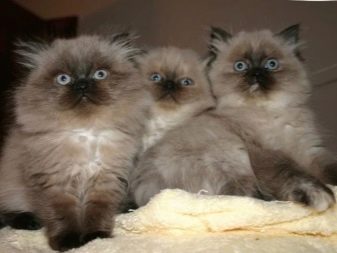
It is considered normal to take a kitten who has reached the age of three months into the house. By this time, animals have already formed immunity, the necessary vaccinations have been carried out. In addition, the baby in a certain sense is already accustomed to everyday life, and you can also be sure that moving to a new place will not become a great stress for him. If a kitten, for example, is only 1.5 months old, he will be taken to a new house only in unforeseen situations. For example, something happened to a cat-mom.
When everything is in order, the baby needs to be near her before he gets stronger. And this happens, first of all, thanks to mother's milk.
Important! An early break with the mother affects the character and habits of the cat when he grows up. Stress is not in vain.
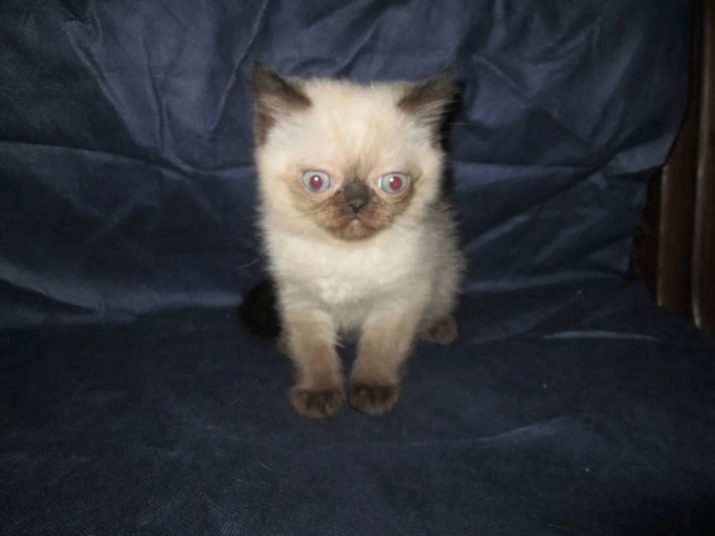
It should be noted that in the passport for the kitten, which must be presented to the breeder, marks are made on the vaccinations of the pet. A hologram confirming the fact of vaccination is pasted into the document, as well as the seal of the veterinarian and the doctor’s signature. There may also be a mark on sterilization or castration.
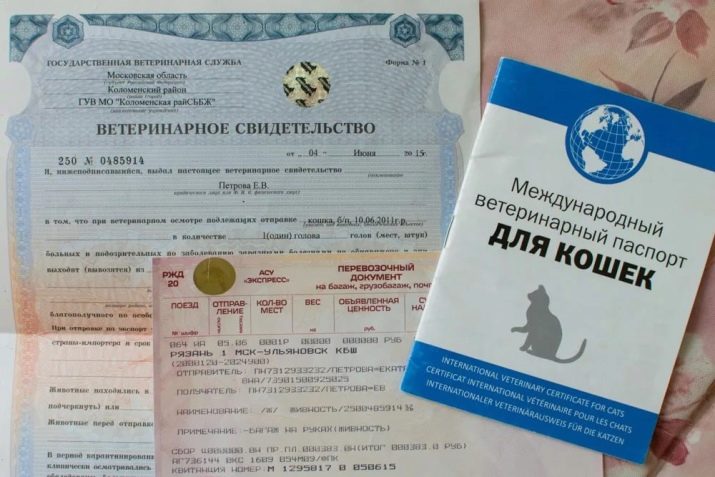
Content
For a fluffy tenant you need to purchase items such as:
- lounger or cat's house;
- bowls;
- restroom;
- toys.
A lounger or a house is installed in a secluded corner (at least for a start), which will allow us to avoid the baleen-tailed, excessive nervousness, until he gets used to the house and its residents. It is advisable to choose a small tray for the baby so that it is not difficult for him to climb into it. (When he grows up, you will need to buy another, more suitable size). You can leave the grate on the tray first. If the pet does not like it, it is not difficult to remove it.
As for the filler, it is desirable to choose a coarse fraction material, for example, wood filler or artificial stone. The advantage of wood is that it perfectly holds the smell, although it turns wet into sawdust that adheres to the cat’s hair. With stone, this does not happen.
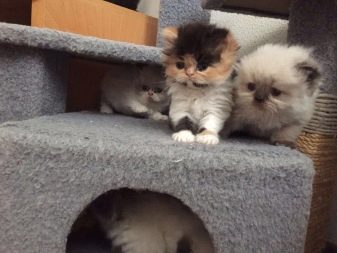
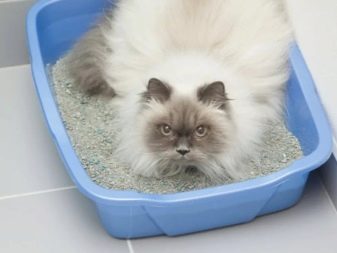
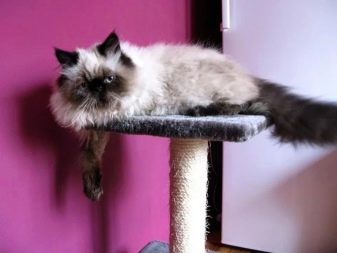

Food
From how a cat eats, depends on its appearance and health. You can use both ready-made store feeds and natural ones. It’s easier to use the store ones, since they already contain all the substances necessary for the cat’s body. The Himalayans are given both dry food and wet canned food. It is important to choose the right product line. Information on whether a particular product is suitable for a pet can be found on the packaging. It indicates the composition, storage rules, shelf life and so on.
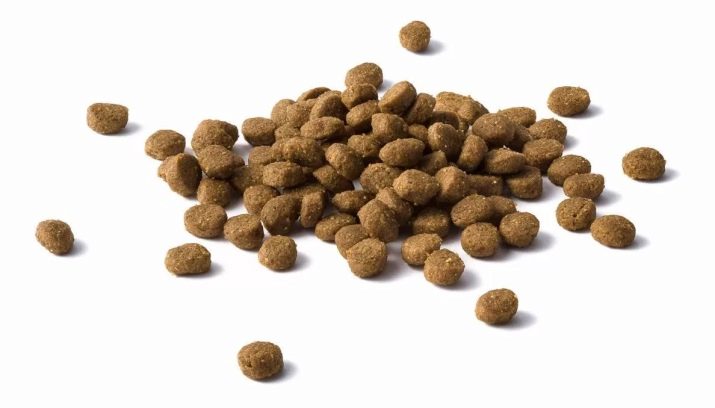
If ordinary products are used, the cat owner will have to independently calculate their calorie content and assess the presence of the necessary substances. You can’t feed an animal with the same foods all the time - it’s very difficult to include all the necessary micro- and minerals, vitamins in one dish. Moreover, if the cat is fed up with food, he will stop and wait for something new. Himalayan cats are fed foods such as:
- poultry meat and beef;
- cereals (rice, buckwheat, oatmeal and so on);
- vegetables and fruits;
- fish (remove bones);
- eggs
- dairy products.
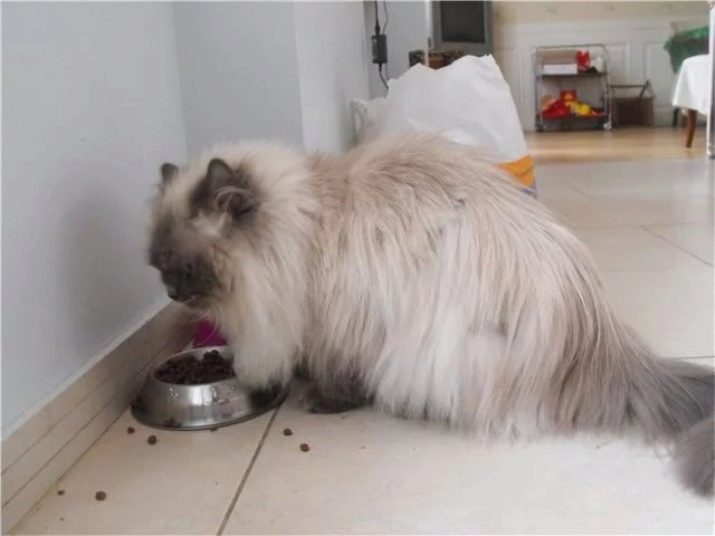
It is better to cook the meat before feeding, and if it is given in raw form, then the product is first frozen, and then the reverse process is carried out. This prevents the cat from becoming infected with parasites and harmful microbes. Do not give the meat meat in large pieces. If you do not chop it finely, the animal may choke. Fruits and vegetables are given raw or boiled. Fish and dairy products should appear infrequently in the diet so that there is no overkill with calcium and phosphorus in the body.
An adult cat should have two meals a day at the allotted time. If you feed her in fits and starts, giving food from the table, she will learn to beg. So that the pet does not feel offended, it is advisable to give him food during his own breakfast or dinner. It’s unpleasant for a furry friend to watch the owner’s food when his own bowl is empty.It should be remembered that in the case of handouts from the table, which become an addition to the main meal, the cat can gain excess weight. It comes to obesity. Therefore, such pampering should not be allowed.
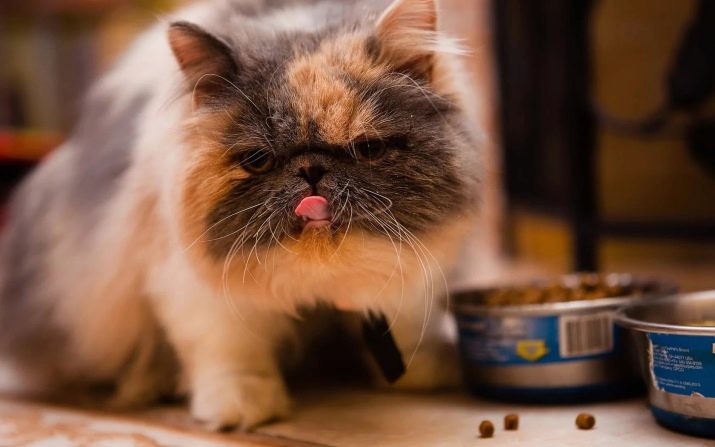
Hygiene
Given that the cat has long hair, and instead of the usual undercoat a downy base, such a fur coat requires constant attention. If you do not deal with it, it will “grow” with tangles, since the hairs on it quickly become tangled, covered with fat released from the skin. This is ugly, and uncomfortable for the pet itself. If you do not comb the coat at least 3 times a week, instead of fluffy in the house there will be a sociable walking boots.
For combing come in handy slicker. It can be bought at a pet store. An alternative is a comb with frequent teeth. Some owners acquire a whole set of tools for putting wool in order, including the following tools:
- slicker;
- comb with frequent teeth;
- a comb with rare teeth.
Important! If there is no time for combing procedures, you can use a furminator comb that allows you to quickly comb out the pet’s hair even during molting.
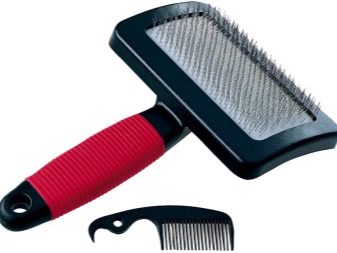
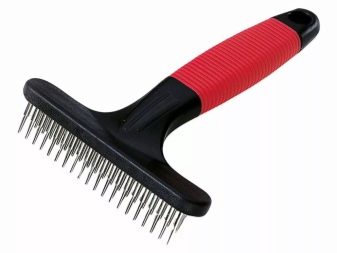

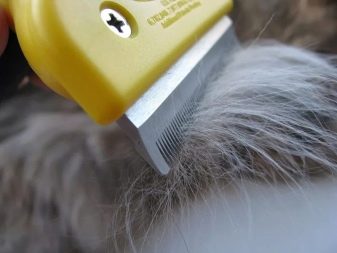
To make the cat's fur coat always look beautiful, fluffy needs to be bathed from time to time. Water removes the secretion of sebaceous glands from the skin, preventing the formation of tartaris. With Himalayans, water procedures are carried out once a month, although if the pet has time to get dirty “clothes” dirty faster, this can be done more often. In the case of this breed of cats, there is no problem in contact with water. Himalayan calmly perceive immersion in liquid.
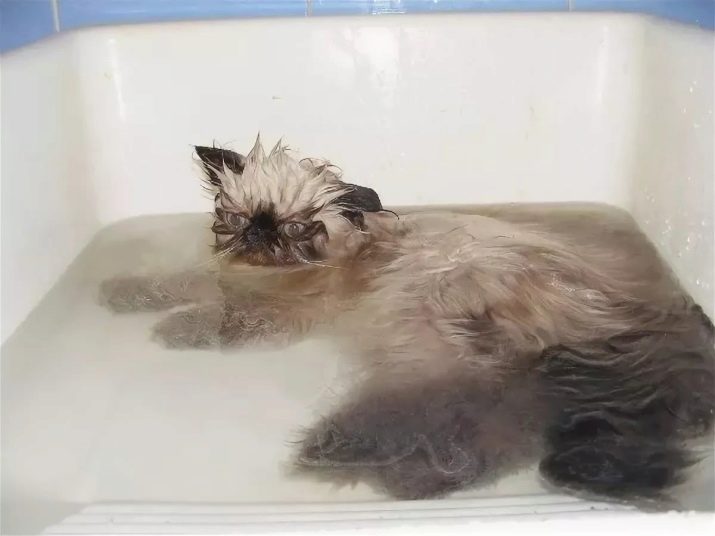
For washing, you need to use special shampoos, and not those that people keep for themselves. After water procedures, the pet is wrapped in a towel so that moisture is absorbed into the fabric. Do not rub wool to dry. It is enough to allow liquid to penetrate into the towel. Then you can wrap the cat in another - a dry towel. And when a little moisture remains on the wool, you can dry it with a hairdryer.
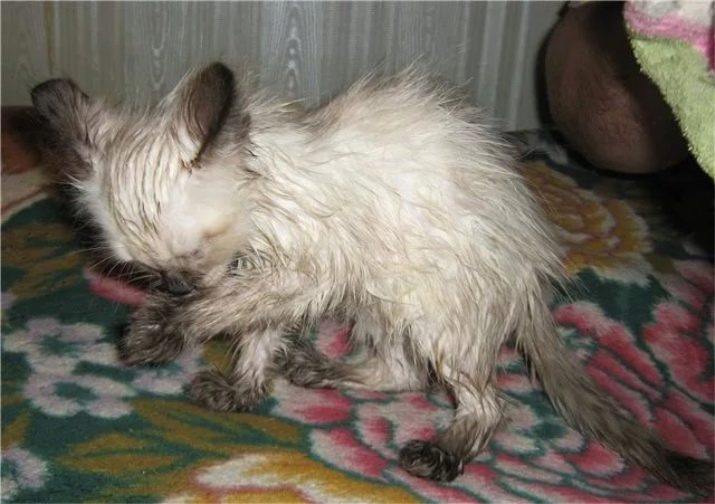
Attention requires not only wool, but also the organs of vision of the Himalayan cat. Her eyes are large and her hair is long. In this case, due to flattening of the muzzle, the lacrimal canal is broken. In contact with the surface of the eyes, the hair causes lacrimation, pollution forms in the corners of the "cat's eyes". They need to be cleaned once a day with a wet cotton swab. This will avoid inflammation. As for the ears, they are cleaned once every 7 days using petroleum jelly or a special oil.
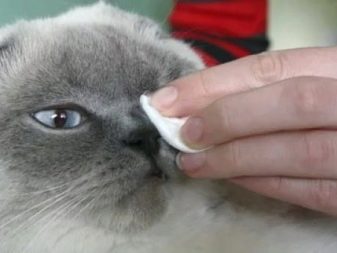
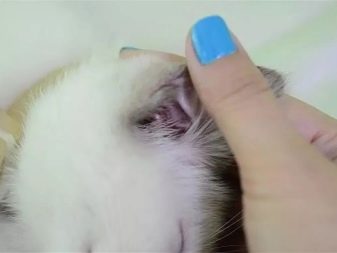
Possible diseases
The content of Himalayan cats is accompanied by some problems. In addition to watery eyes, it can be snoring. But just such oddities cannot be fully attributed to diseases. What seems to be a breathing problem to humans is normal for such a cat, because snoring is associated with the peculiarities of the “structure” of the respiratory system. (Although this does not negate the fact that a flattened nose constantly attracts respiratory diseases).
With regard to the health of Himalayan cats, symptoms such as:
- weight loss;
- impaired appetite;
- the cat breathes with difficulty;
- lethargy;
- aggression;
- skin problems such as peeling or swelling;
- strong discharge from the eyes, nose;
- painful eye changes such as dilated pupils or swelling;
- urination with pain in the pet;
- diarrhea and vomiting.
Any of the suspicious manifestations is an occasion to urgently contact a specialist. And also you need to consider that “Persian heredity” is manifested in a predisposition to renal diseases, in particular, to polycystic.
If the cat constantly drinks and hardly goes to the toilet in a small way, doing this suspiciously often and at the same time “missing” the tray, you need to deal with his health.
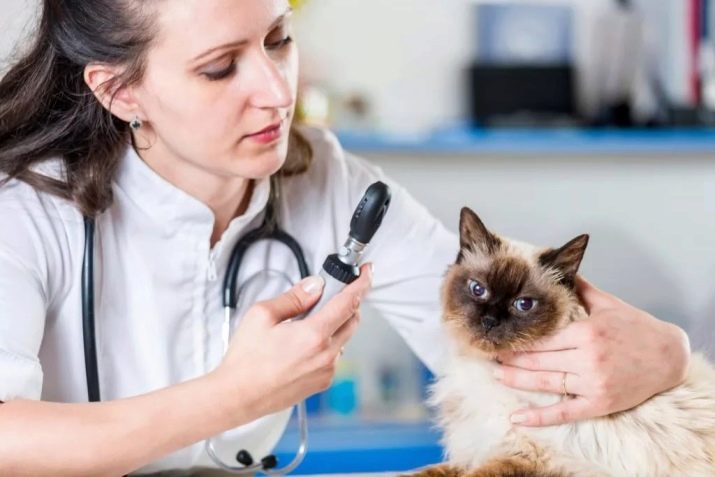
Owner reviews
The attitude to the breed of Himalayan cats among their owners is often the opposite.Some are completely delighted with their pets, do not rejoice at their high intelligence and beauty, while others find in them a constant source of problems associated with the characteristics of their physiology and character. In particular, many are unhappy with the rapid weight gain and the fact that cats sleep too long. Others are forced to deal with wet eyes and noses.
According to the observations of the owners of the pussies, they are very smart. Some learn to go to the toilet, get along well with other animals in the house, very mobile.
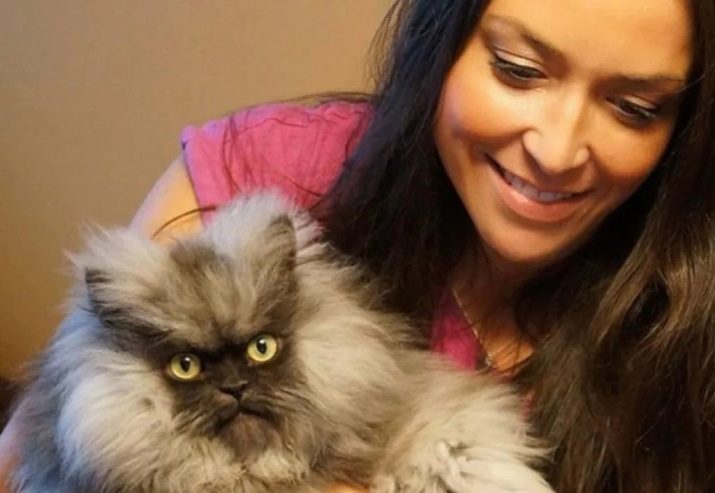
About the features of the Himalayan cat breed, see below.
